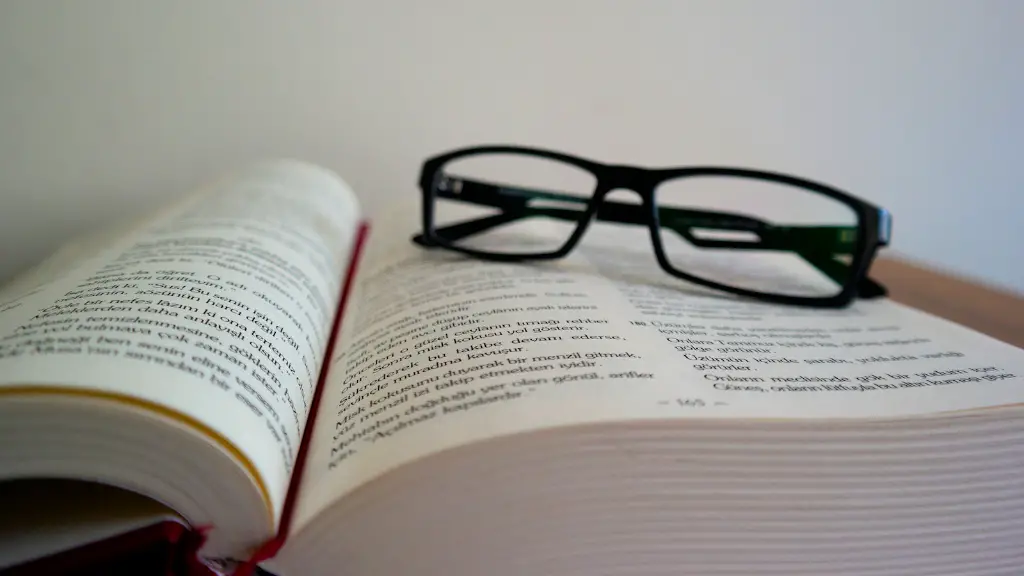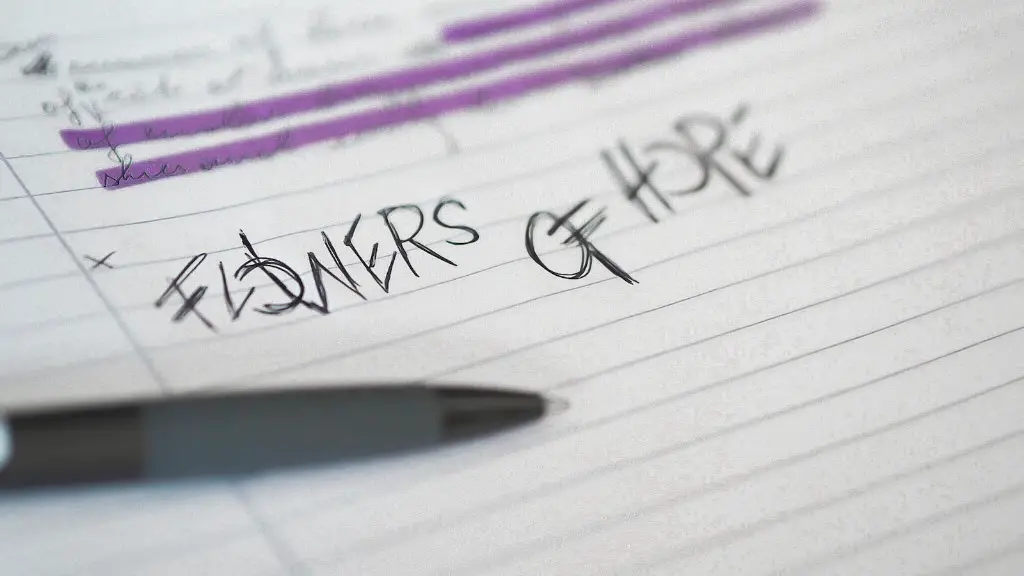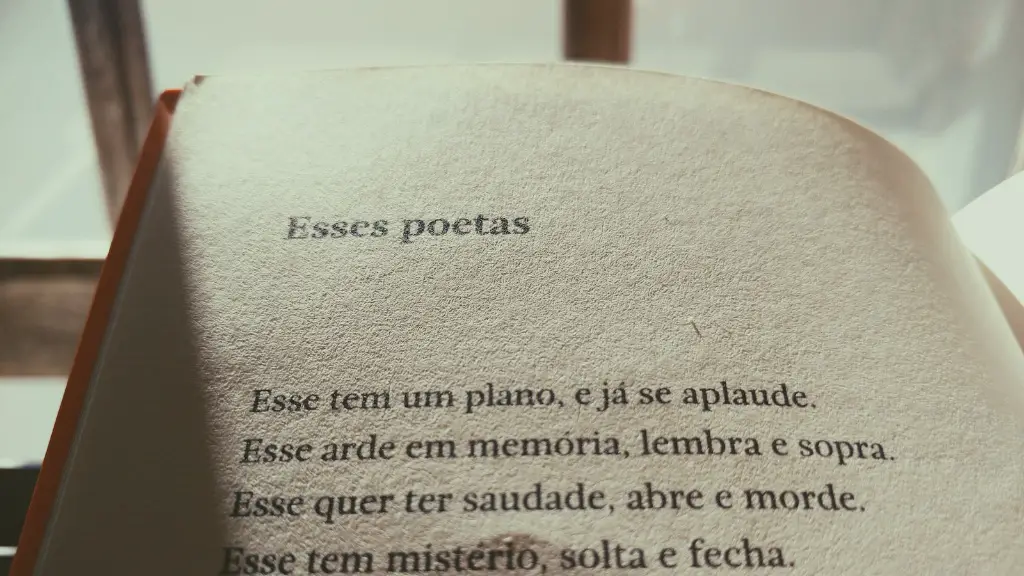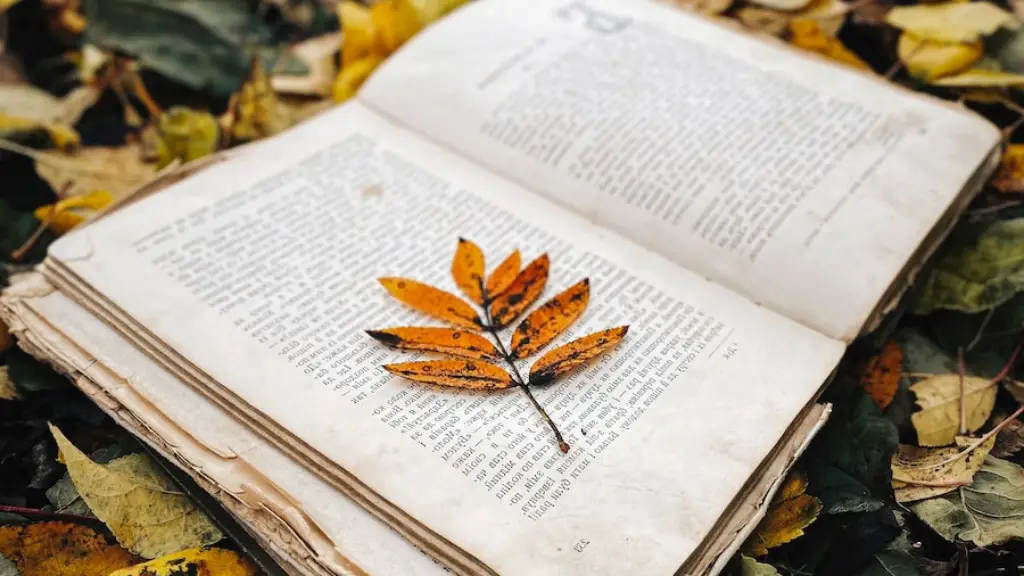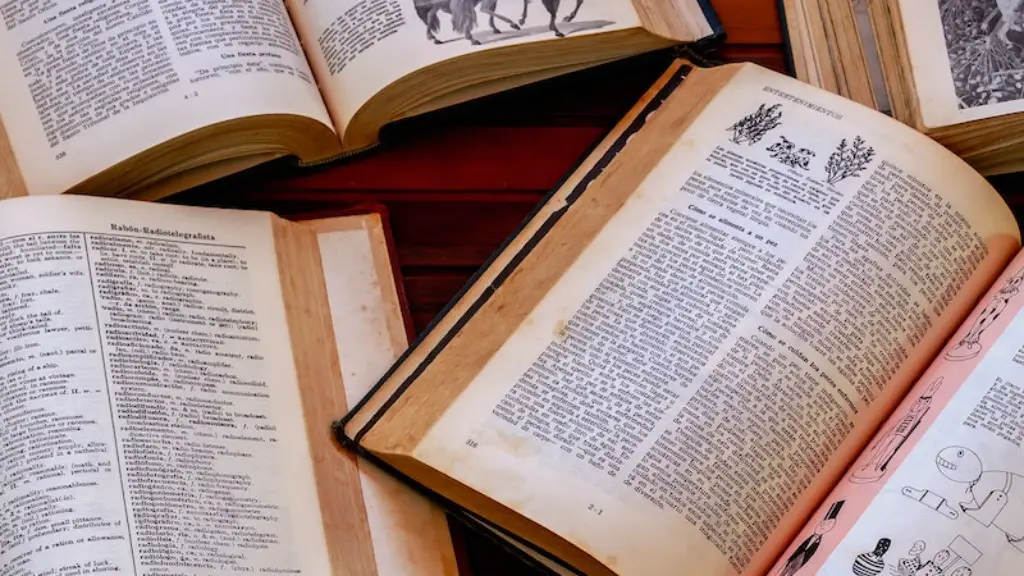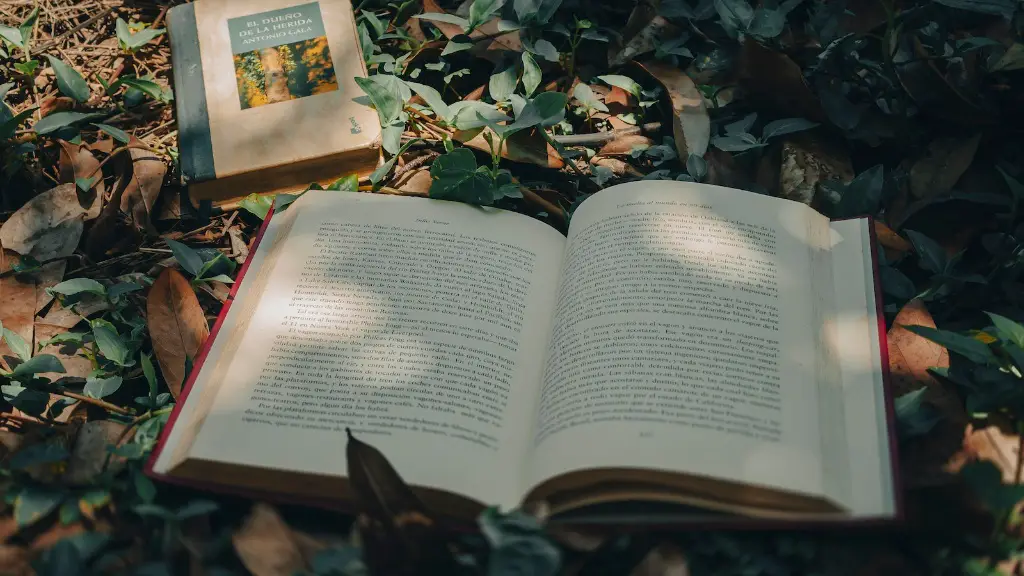Open form poetry is an approach to writing poetry that doesn’t involve using traditional poetic forms, like sonnets, haikus, and villanelles. It is commonly used by writers of modern and contemporary poetry. Open form poetry generally relies on content and modernist aesthetic principles such as fragmentation, juxtaposition, and nonlinearity.
Unlike traditional types of poetry, open form poems are not strictly structured and are often written without meter or rhyme. This makes them quite accessible for many people and encourages experimentation. In this way, open form poetry serves as an entry point into the world of poetic writing for those who have not practiced traditional forms.
One of the primary goals of open form poetry is to apply the techniques of modernist literature, such as fragmentation and the manipulation of language, to the craft of poetry. This often leads to a more abstract style of poetry with a greater focus on language, rhythm, and ideas.
The writers of open form poetry create their poetic works by starting with an idea, or a set of ideas, and working through the language to express them. The resulting works are often written as single sentences or paragraphs that can range in length from a few lines to a page or more.
Open form poetry can be difficult to analyze, as it does not always follow traditional poetic conventions like meter, rhyme, and stanzas. However, it can be illuminating to look at the way language is used in the poem and how the poem is structured.
Open form poetry is an important part of the modern poetry movement, and it has allowed poets to express themselves in new and innovative ways. It has opened up the form to new perspectives as well as providing an avenue for experimentation and exploration.
What Is The Role Of Images In Open Form Poetry?
One of the distinguishing features of open form poetry is the incorporation of visual elements, such as photographs, illustrations, or other types of images. This is often done to add a certain visual dimension to the poem, as well as evoke an emotional response in the reader. The use of images in open form poetry serves as a reminder that poetry can and should be accessible to people of all backgrounds and levels of literacy.
Many open form poems rely heavily on images and other visual elements to both complement and contrast with the poem’s ideas and overarching themes. Images can be used to link together ideas in the poem, or to separate two opposing ideas. They can also be used to create a narrative in a poem, or to give the poem a sense of depth and movement.
The incorporation of images in open form poetry is an important part of its composition, because it allows writers to use visual elements as a way of expressing their ideas and emotions in a more accessible way. By using images, writers can add new dimensions to their work and engage a larger audience.
Open form poetry is an exciting way to explore language and visual elements, and the use of images can add a unique dimension to the writing process. In this way, open form poetry is able to bridge the gap between different art forms and languages.
What Are Examples Of Open Form Poetry?
Some of the most famous examples of open form poetry are the works of Welsh poet Dylan Thomas, who wrote both traditional and open form poems. His open form poetry often experimented with fragmentation and nonlinearity, as well as language and imagery, to explore his ideas and capture an emotional response from readers.
Another example of open form poetry can be found in the work of American poet Allen Ginsberg. His poem Howl is considered to be an example of open form poetry, as it incorporates a range of visual elements and incorporates modernist techniques such as juxtaposition and fragmentation.
American poet Ezra Pound is also credited with creating an open form style of poetry, through his work The Cantos. Pound’s work was highly fragmented and often used visual elements to illustrate and emphasize certain ideas.
Other poets who have experimented with open form poetry include T.S. Eliot, Robert Frost, and Sylvia Plath. These poets were all greatly influenced by modernist literature and its techniques, incorporating them into their poetry in order to create works that went beyond traditional forms.
What Are The Benefits Of Open Form Poetry?
One of the main benefits of open form poetry is that it allows for more flexible and imaginative writing. By not adhering to traditional poetic conventions, writers are able to explore different ways of expressing their ideas. This can create a more creative and engaging writing experience, allowing writers to experiment with different techniques and styles.
Due to its lack of strict structure, open form poetry can also be more easily understood by those who have not had prior experience with poetry writing. It is sometimes seen as more accessible than traditional poetry forms, and can be used as an entry point into the world of poetry.
Open form poetry is also highly adaptable, enabling writers to incorporate a variety of visual and lyrical elements into the poem. This gives writers more freedom to express their ideas in a more creative and unconventional way, making for an exciting and dynamic writing experience.
Open form poetry is an important part of modern and contemporary poetry, and has enabled poets to express themselves in new and inventive ways. By freeing writers from the constraints of traditional poetic forms, it has allowed new perspectives to flourish and provided a platform for experimentation and creativity.
What Are The Challenges Of Open Form Poetry?
Although Open form poetry can be a liberating experience for writers, it can also present a variety of challenges. Without the use of traditional poetic structures and conventions, it is often difficult to create a cohesive poem. Without a structure, a poem can sometimes feel like a jumble of words, and it can be difficult to communicate a clear message to the reader.
Another challenge associated with Open form poetry is that it often lacks clear emotional impact. Traditional poetic structures often provide a reference point for emotional content, allowing readers to more easily understand the writer’s feelings. Without this reference point, it can be difficult to create an emotional reaction.
Evaluating Open form poetry can also be a challenge, as it does not follow the traditional conventions of poetry and can be difficult to analyze. Without a set structure or meter, it can be difficult to determine the meaning or themes of a poem. Evaluating Open form poetry often requires a deep understanding of the writer’s technique and use of language.
Open form poetry can be an engaging and dynamic form of writing, but it also presents its own set of challenges. By understanding the difficulties associated with it, writers can better prepare themselves for the trials that lie ahead.
What Are The Elements Of Open Form Poetry?
Open form poetry is composed of several different elements, all of which come together to create the poem. The primary element of open form poetry is language, which is often used in a fragmented and disjointed way to create a certain effect. Poets often use language to evoke an emotional response in the reader, as well as to explore complex ideas and create a narrative.
Open form poetry also relies heavily on visual elements, such as photographs, illustrations, and text. These elements are used to heighten the reader’s emotional response and to convey the writer’s ideas in a more engaging way. Visual elements also add an extra layer to the poem, allowing for a more complex exploration of themes and concepts.
Another important element of open form poetry is how it is structured. Open form poems often have no traditional structure, meaning that they can be composed of single sentences, paragraphs, or even larger passages. This lack of structure gives writers more freedom to experiment and explore ideas.
Open form poetry has a unique set of elements that make it an appealing style of writing for many poets. By exploring these elements in depth, writers can better understand their craft and create more meaningful and engaging works.
What Is The Future Of Open Form Poetry?
Open form poetry has been influential in the world of contemporary poetry, and it is likely to remain a major part of the movement in the future. As more and more poets continue to explore the elements of open form poetry, the future of this style is likely to be shaped by their experiments and innovations.
The increasing availability and accessibility of digital technologies has made it easier for poets to write and access open form poetry. This has enabled more people to enter the world of poetry writing and to experiment with open form poetry. As this accessibility continues to grow, the future of open form poetry will become even more interesting.
Open form poetry is an important part of modern and contemporary poetry, and will likely remain so in the future. In this way, open form poetry provides a platform for poets to explore language and ideas in new and exciting ways.
Open form poetry has already had an enormous impact on the landscape of modern poetry, and it will continue to be influential in the years to come. As more and more poets experiment with this form of poetry, the future of open form poetry looks to be an exciting and innovative one.
